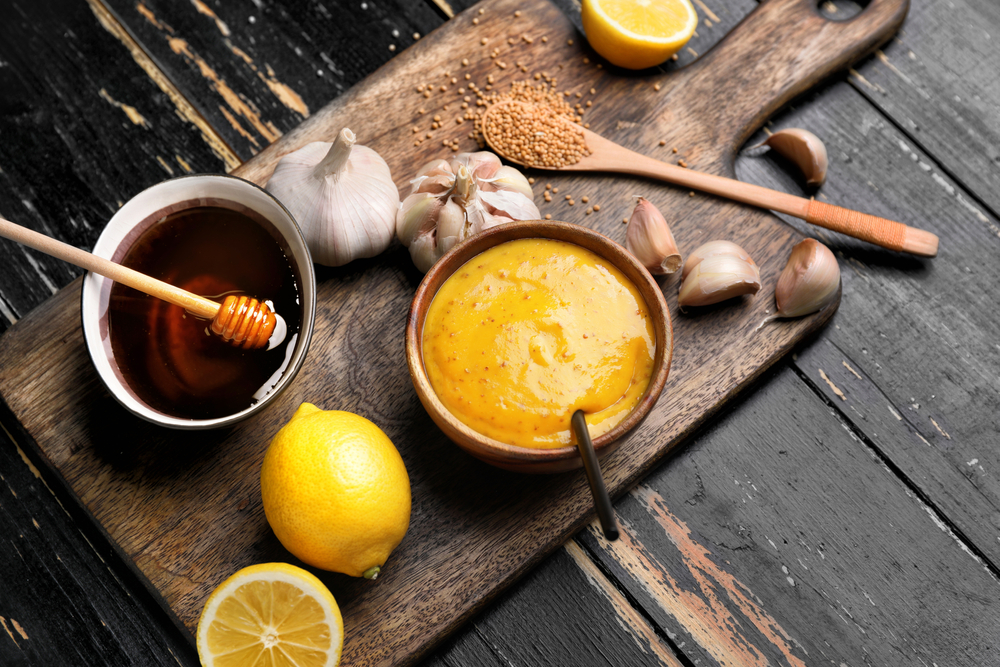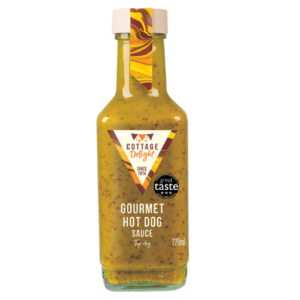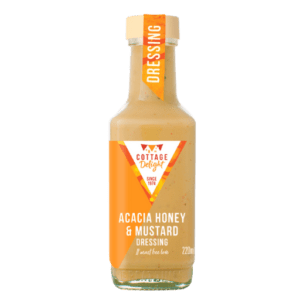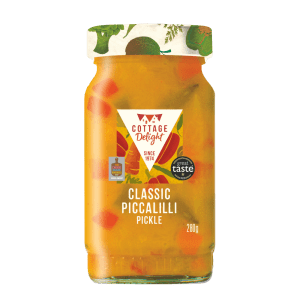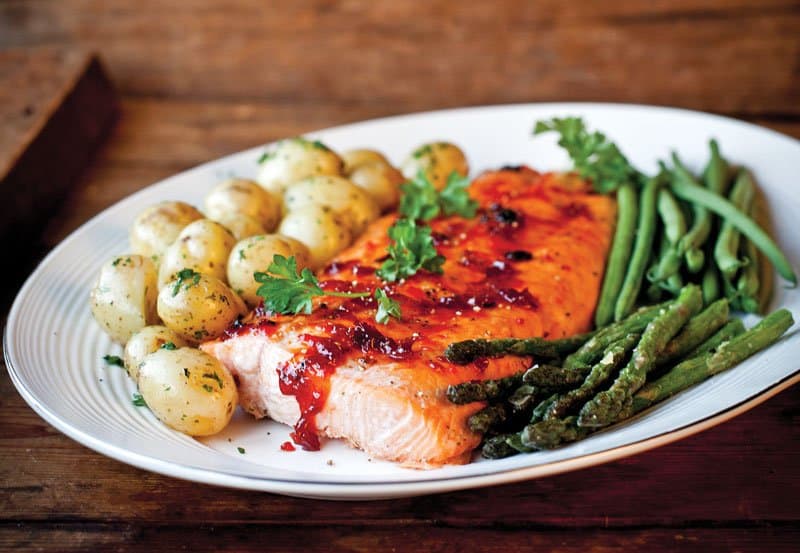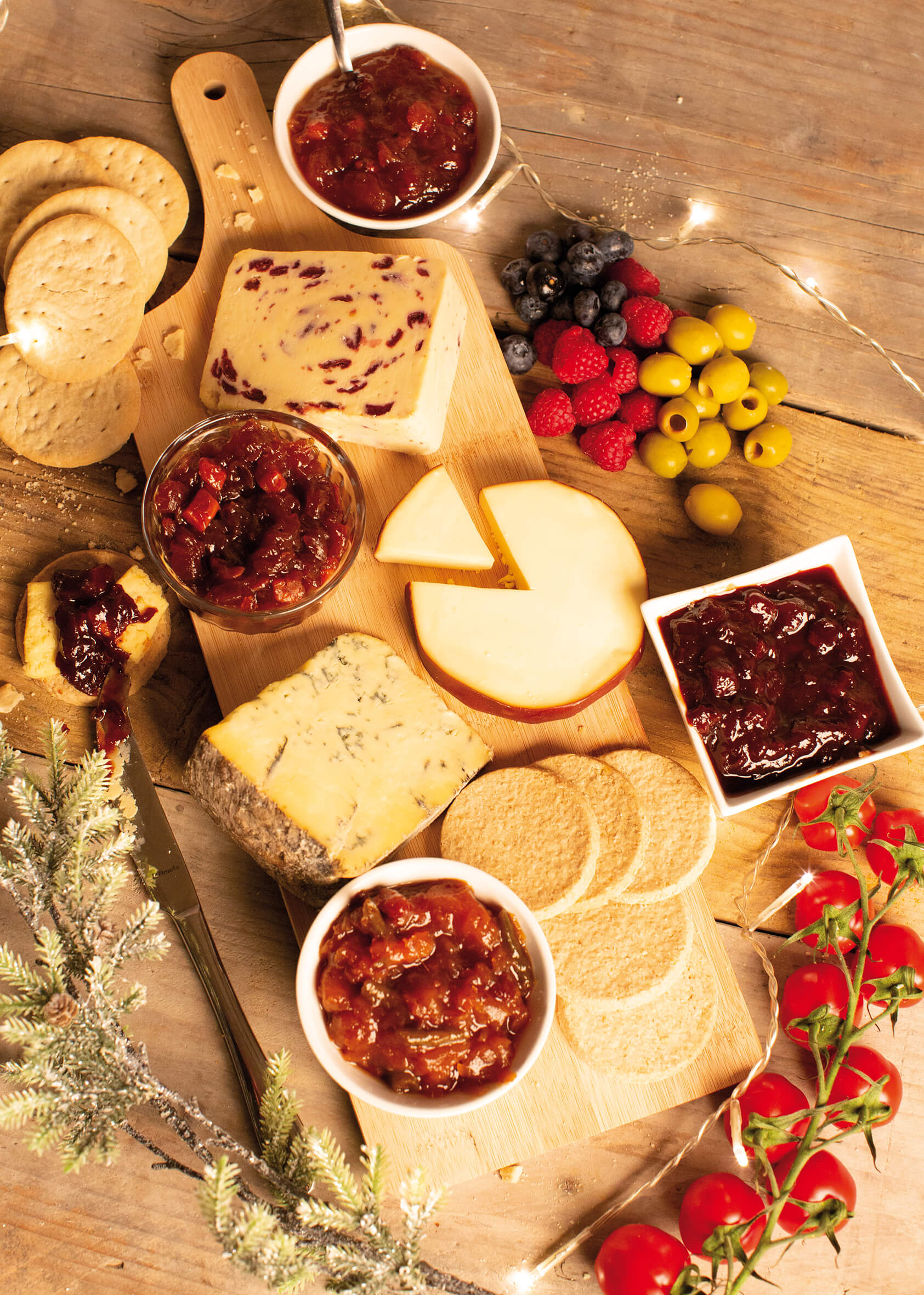Hot stuff! Our guide to some of the most popular varieties of mustard.
Mustard has been the hot partner of choice for adding zing to countless dishes ever since early Roman cooks first combined ground mustard seeds with unfermented grape juice (otherwise known as must).
The result was a hot and spicy paste – mustum ardens – later shortened to ‘mustard’ when it came to the English-speaking world and became an indispensable accompaniment for burgers, hot dogs, shepherd’s pie, sausages and mash, all kinds of meats, salad dressings, cheese or ham sandwiches, delicious glazes – the list just goes on and on.
What is mustard made of?
The basic recipe for all mustards is a simple combination of ground mustard seeds and some kind of liquid. From there, the different varieties that result all depend on the type of mustard seeds used and the choice of liquid.
While yellow seeds are mild, brown and black seeds are hotter, spicier and more pungent. These qualities are produced by enzymes, released naturally in the mustard oil when the seeds are broken and combined with liquid.
The liquid itself also makes a difference to mustard’s pungency. More acidic liquids produce a slower but longer-lasting reaction; less acidic liquids tend to make the mustard more pungent at first but lose their bite soon afterwards.
What is wholegrain mustard?
The clue is in the name, as wholegrain mustard is made using whole mustard seeds. In fact, the seeds are ground, but just enough to form a partly liquid paste with whole seeds in it, creating a thicker, coarser texture than other mustards.
Some whole grain mustards are made with wine rather than vinegar, and brown or black seeds rather than yellow, giving them a deep, rich flavour with added punch.
This mustard variety is a popular choice to go with cheeses or ham sandwiches, besides providing a bit of texture to bite into for dressings.
What is Dijon mustard?
This is a classic French mustard originally produced in Dijon, France, once the centre of mustard making in the late Middle Ages. Dijon mustard can now be made elsewhere as the ‘Dijon’ name is not protected by copyright in the way that Champagne is.
Often made using white wine and the spicier brown and/or black mustard seeds that give it a stronger, spicier flavour than yellow mustard when you want to add a slightly sharper edge to vinaigrettes, mayonnaise, sauces or spreads.
What is yellow mustard?
This is the mild one of the mustard family, coloured bright yellow by using finely ground yellow mustard seeds together with the yellow spice turmeric.
Mixed with vinegar, water and usually a few other mild spices to create a sauce that wouldn’t make anyone’s eyes water, but has definitely perked up countless millions of hot dogs and hamburgers on its own, or delivered its familiar tangy mellow signature to homemade salad dressings, barbecue sauces and marinades.
(Not to be confused with English mustard, which is also yellow but slightly darker and somewhat fiercer.)
What is English mustard?
One of the hotter mustards thanks to its lower acid content, this variety is often bought in its powdered form and mixed with cold water before use. Made from a mix of milder yellow and the stronger brown mustard seeds, this is bright yellow with a thick consistency when made.
Available in prepared form since the 1700s, this is a firm English favourite often used to accompany cold and hot meats, in sandwiches and as a general table condiment.
What is German mustard?
Using yellow and brown seeds, and available in an interesting range of flavours and consistencies, German mustards can be spicy or sweet, coarse or fine, and have added extra ingredients.
By adding more brown seeds and less acidic vinegar, it can be hotter, or with the addition of honey, brown sugar or apple sauce, sweeter. It all depends on which region of the country you do your shopping. As you might expect, any one of them will go beautifully with some fine German wurst.
Cottage Delight’s new mustard
Cottage Delight are about to add two brand new mustard varieties to our inspirational product line-up.
First is our very own superior quality French Wholegrain Mustard, made with mouth popping mustard seeds to create an intense, rich flavour.
Joining it is our very own fine French Dijon Mustard which brings a delightfully sharp flavour enrobed in a velvety texture.
Both have been created exclusively for Cottage Delight by a highly renowned French mustard maker using only ingredients of the very highest quality to bring our customers the authentic flavour of these two great mustard styles.
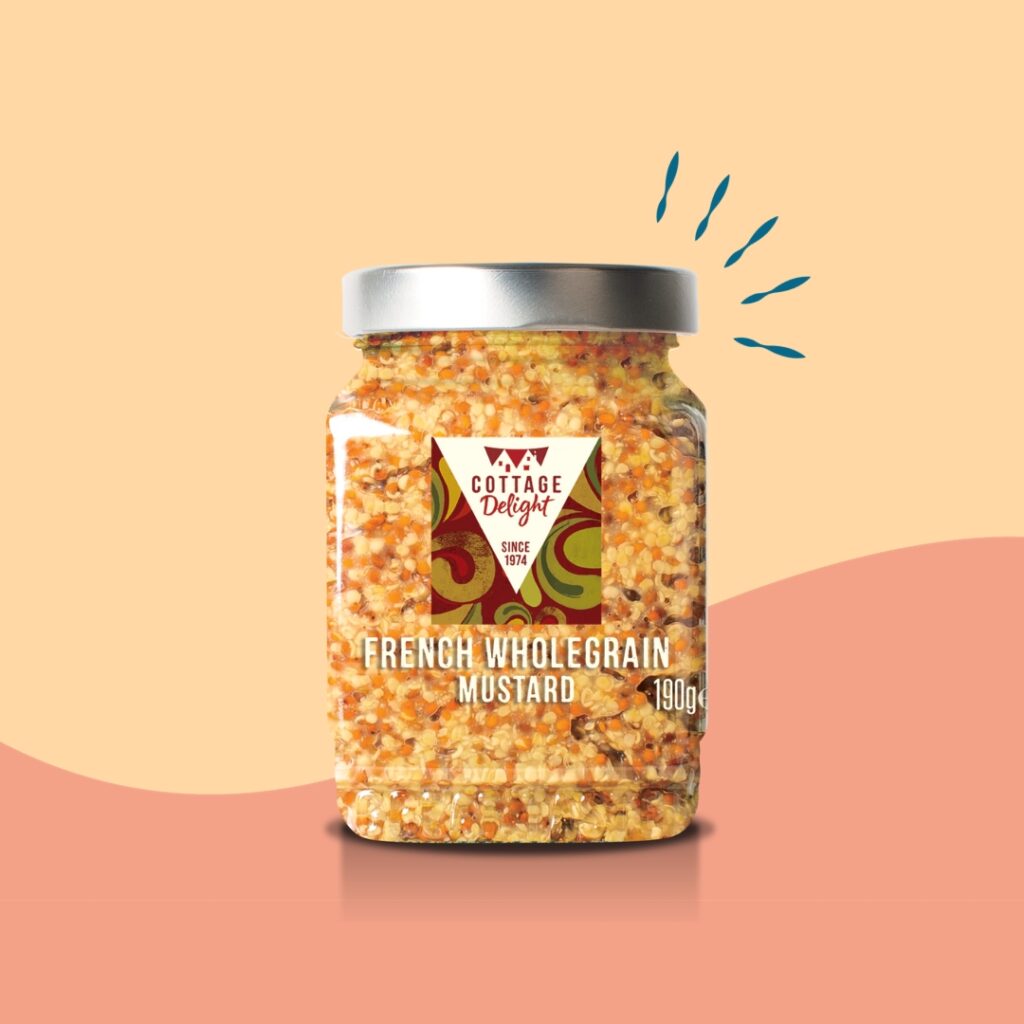
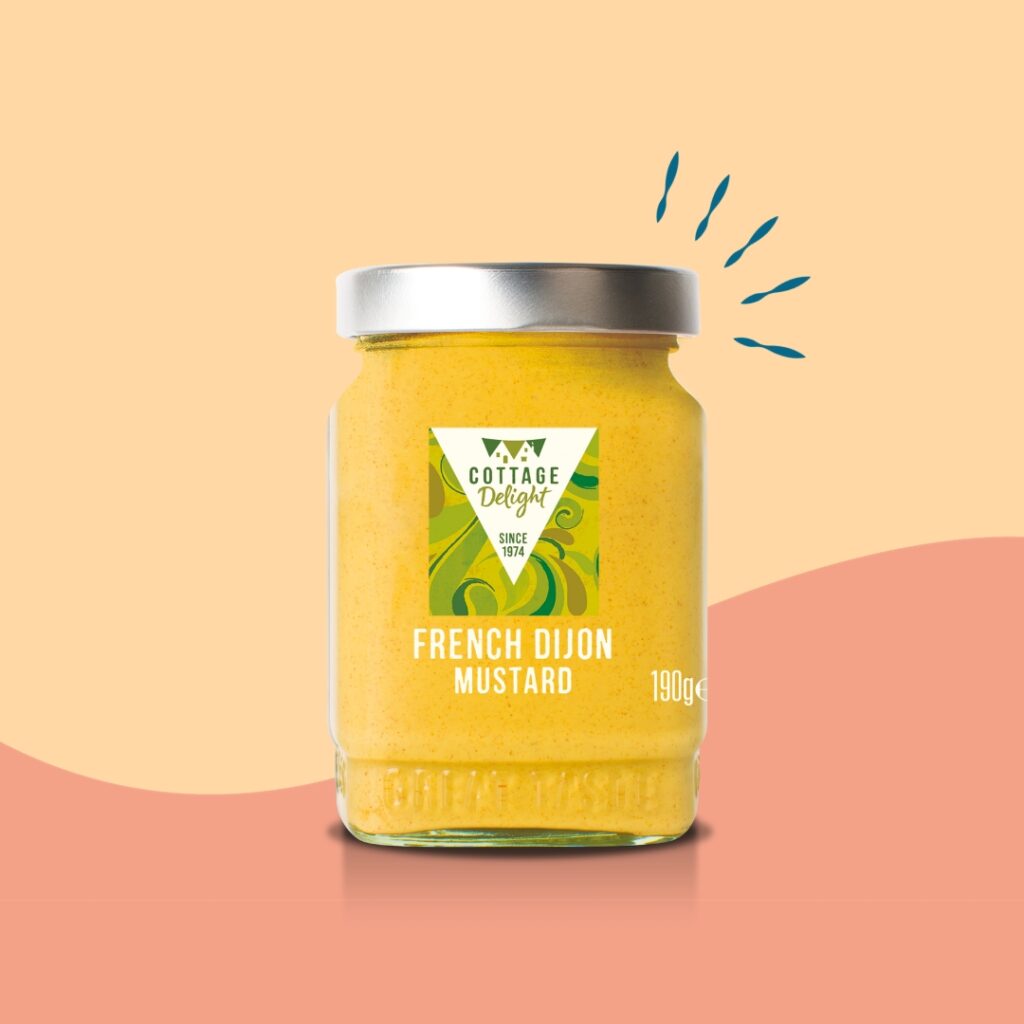
Mad about mustard? A number of our other products are mustard-based, proving once and for all how versatile this creative condiment really is.
Why not give our Burger Sauce or Hot Dog Sauce a go? Or, if you’re looking for something a little lighter, try our Acacia Honey & Mustard Dressing to spice up a salad. Don’t forget our punchy Piccalilli Pickle too!
Head on over to our recipes for some marvellous mustard inspiration including Creamy Honey Mustard Chicken and Tomato, Onion and Mustard Tart.
PRODUCTS USED IN THIS BLOG
Take a look at a selection of sauces
Other blogs you might like to read
